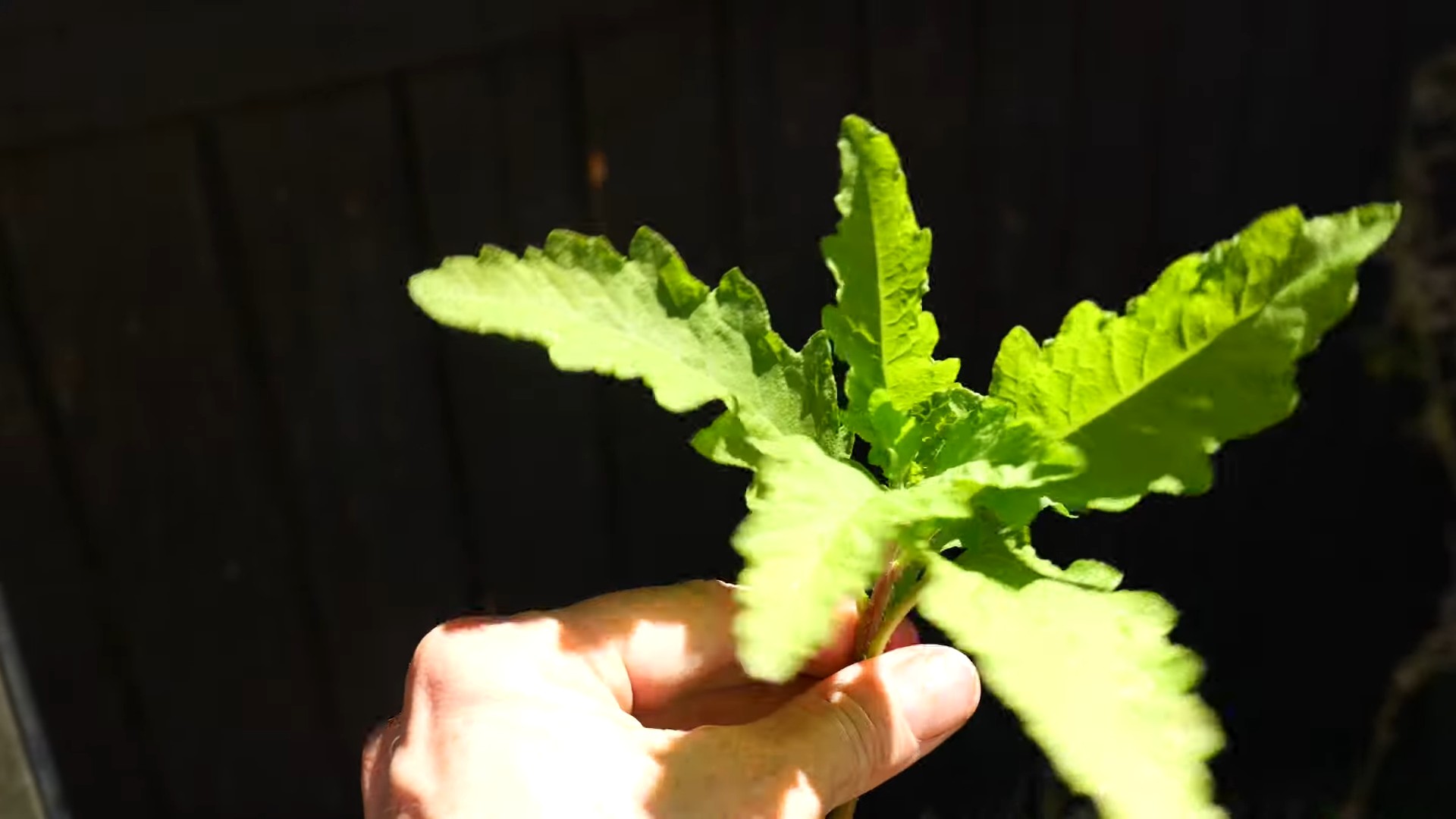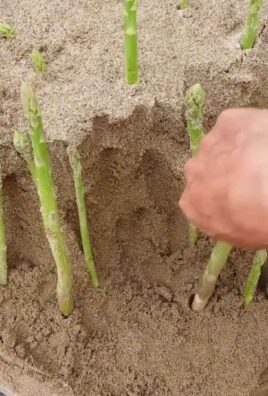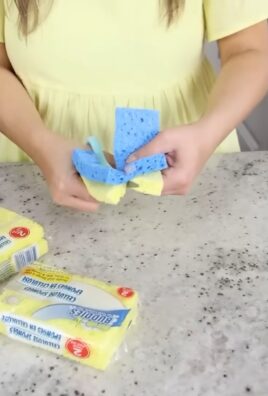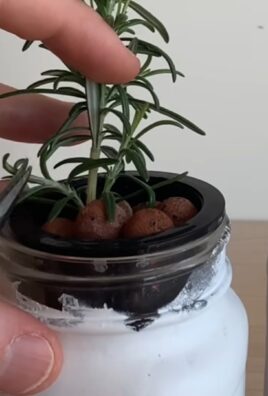Growing Epazote Indoors might seem like a niche pursuit, but trust me, once you discover the magic of this herb, you’ll be hooked! Have you ever craved that authentic, earthy flavor in your black beans or quesadillas, only to find it missing? That’s where homegrown epazote comes in. For centuries, this herb has been a staple in Mexican cuisine, not just for its distinctive taste, but also for its traditional use in aiding digestion. Think of it as nature’s secret ingredient for delicious and comfortable meals.
But why bother growing it indoors? Well, not everyone has the perfect outdoor climate for epazote to thrive. Plus, having it readily available right in your kitchen is incredibly convenient! I’m going to show you some simple, effective DIY tricks to successfully cultivate your own thriving epazote plant, even if you’re a complete beginner. Imagine the satisfaction of snipping fresh leaves whenever you need them, knowing exactly where they came from and how they were grown. This guide will provide you with all the essential tips and hacks to make growing epazote indoors a rewarding and flavorful experience. Let’s get started!

Growing Epazote Indoors: A Beginner’s Guide
Hey there, fellow plant enthusiasts! Ever wanted to add a unique, pungent flavor to your Mexican dishes straight from your own indoor garden? Well, you’re in the right place! Today, I’m going to walk you through the surprisingly simple process of growing epazote indoors. This herb, with its distinctive anise-citrusy aroma, is a fantastic addition to beans, quesadillas, and so much more. Let’s get started!
Why Grow Epazote Indoors?
Before we dive in, let’s talk about why growing epazote indoors is a great idea.
* Year-Round Harvest: You’re not limited by the seasons! Enjoy fresh epazote whenever you need it.
* Control Over Environment: You can regulate temperature, light, and humidity, ensuring optimal growing conditions.
* Pest Control: Indoor growing minimizes the risk of pests and diseases that can plague outdoor gardens.
* Convenience: Fresh herbs are always at your fingertips, ready to elevate your cooking.
* Space Saving: Epazote doesn’t need a huge amount of space, making it perfect for apartment dwellers or those with limited outdoor gardening areas.
What You’ll Need
Here’s a list of everything you’ll need to successfully grow epazote indoors:
* Epazote Seeds: You can find these online or at specialty garden centers. Make sure you’re getting seeds specifically for epazote (Dysphania ambrosioides).
* Potting Mix: Use a well-draining potting mix. A mix designed for herbs or vegetables works perfectly. Avoid using garden soil, as it can be too heavy and compact.
* Pots: Choose pots that are at least 6 inches in diameter and depth. This will give the epazote roots enough room to grow. You can start with smaller pots for seedlings and transplant later.
* Grow Lights (Optional but Recommended): While epazote loves sunlight, indoor light can be insufficient, especially during winter. Grow lights will ensure your plants get the light they need.
* Watering Can or Spray Bottle: For gentle watering.
* Seed Starting Tray (Optional): If you prefer to start your seeds indoors before transplanting.
* Small Shovel or Trowel: For transplanting.
* Fertilizer (Optional): A balanced liquid fertilizer can help boost growth, but it’s not essential.
* Well-Ventilated Area: Epazote has a strong smell, so make sure your growing area has good ventilation.
Step-by-Step Instructions: From Seed to Harvest
Okay, let’s get our hands dirty! Here’s a detailed guide to growing epazote indoors:
Section 1: Starting Your Seeds
1. Prepare Your Seed Starting Tray or Pots: If you’re using a seed starting tray, fill each cell with your potting mix. If you’re using pots, fill them about ¾ full.
2. Sow the Seeds: Epazote seeds are tiny, so sprinkle them lightly over the surface of the soil. You don’t need to bury them deeply; just gently press them into the soil.
3. Water Gently: Use a spray bottle to mist the soil. You want to moisten the soil without dislodging the seeds.
4. Cover (Optional): Covering the seed starting tray or pots with a clear plastic lid or plastic wrap can help retain moisture and speed up germination. Just make sure to remove the cover once the seedlings emerge.
5. Provide Light and Warmth: Place the seed starting tray or pots in a warm location with plenty of light. If you’re using grow lights, position them a few inches above the soil surface. Aim for a temperature of around 70-75°F (21-24°C).
6. Keep the Soil Moist: Check the soil moisture daily and mist with water as needed to keep it consistently moist but not soggy.
7. Wait for Germination: Epazote seeds typically germinate in 7-14 days. Be patient!
Section 2: Transplanting Seedlings (If Applicable)
If you started your seeds in a seed starting tray, you’ll need to transplant them into larger pots once they have a few sets of true leaves (the leaves that look like miniature versions of the adult leaves).
1. Prepare Your Pots: Fill your chosen pots (at least 6 inches in diameter) with potting mix, leaving about an inch of space at the top.
2. Gently Remove Seedlings: Carefully loosen the soil around the seedlings in the seed starting tray. Use a small spoon or trowel to gently lift the seedlings out, being careful not to damage the roots.
3. Plant the Seedlings: Make a small hole in the center of the potting mix in each pot. Place the seedling in the hole and gently backfill with soil.
4. Water Thoroughly: Water the transplanted seedlings thoroughly to help settle the soil around the roots.
5. Provide Light and Warmth: Place the transplanted seedlings in a location with plenty of light and warmth.
Section 3: Caring for Your Epazote Plants
Now that your epazote plants are established, here’s how to keep them thriving:
1. Light: Epazote needs at least 6 hours of direct sunlight per day. If you’re growing indoors, supplement with grow lights if necessary. Position the lights a few inches above the plants and adjust as they grow.
2. Watering: Water your epazote plants when the top inch of soil feels dry to the touch. Avoid overwatering, as this can lead to root rot. Make sure your pots have drainage holes to allow excess water to escape.
3. Temperature: Epazote prefers temperatures between 60-80°F (15-27°C). Avoid exposing your plants to extreme temperatures or drafts.
4. Humidity: Epazote doesn’t require high humidity, but it appreciates a slightly humid environment. You can increase humidity by placing a tray of water near the plants or using a humidifier.
5. Fertilizing (Optional): If you want to boost growth, you can fertilize your epazote plants every 2-4 weeks with a balanced liquid fertilizer. Follow the instructions on the fertilizer label. Don’t over-fertilize, as this can lead to leggy growth and a less intense flavor.
6. Pruning: Pruning your epazote plants regularly will encourage bushier growth and prevent them from becoming leggy. Simply pinch off the tips of the stems to promote branching.
7. Ventilation: Epazote has a strong aroma, so ensure good ventilation in your growing area. Open a window or use a fan to circulate the air.
Section 4: Harvesting Your Epazote
The best part! You can start harvesting epazote leaves once the plants are about 6-8 inches tall.
1. Harvesting Leaves: Use scissors or your fingers to pinch off the leaves you need. Harvest from the top of the plant to encourage new growth.
2. When to Harvest: Harvest epazote leaves in the morning, after the dew has dried. This is when the leaves have the most intense flavor.
3. How Much to Harvest: Don’t harvest more than one-third of the plant at a time. This will allow the plant to continue growing and producing new leaves.
4. Using Fresh Epazote: Fresh epazote leaves can be used immediately in your cooking. Simply chop them up and add them to your dishes.
5. Drying Epazote: If you want to preserve your epazote, you can dry the leaves. Hang the stems upside down in a cool, dry place until the leaves are completely dry. You can also use a dehydrator. Once the leaves are dry, store them in an airtight container.
Troubleshooting
Even with the best care, you might encounter some problems while growing epazote indoors. Here are some common issues and how to address them:
* Yellowing Leaves: This could be a sign of overwatering, underwatering, or nutrient deficiency. Check the soil moisture and adjust your watering accordingly. If the soil is consistently moist, reduce watering. If the soil is dry, water more frequently. If you suspect a nutrient deficiency, try fertilizing with a balanced liquid fertilizer.
* Leggy Growth: Leggy growth (long, spindly stems with few leaves) is usually caused by insufficient light. Make sure your epazote plants are getting enough sunlight or grow light. Pruning can also help encourage bushier growth.
* Pests: While indoor growing minimizes the risk of pests, you might still encounter aphids, spider mites, or whiteflies. Inspect your plants regularly for signs of pests. If you find any, you can try washing them off with a strong stream of water or using an insecticidal soap.
* Root Rot: Root rot is caused by overwatering and poor drainage

Conclusion
So, there you have it! Growing epazote indoors is not only achievable but also incredibly rewarding. Imagine having fresh, aromatic epazote readily available whenever you need it, adding that authentic, earthy flavor to your favorite Mexican dishes. No more last-minute grocery store runs or settling for dried herbs that lack the vibrant punch of the fresh stuff. This DIY trick is a must-try for any home cook or gardening enthusiast looking to elevate their culinary creations and connect with the origins of their food.
The beauty of growing epazote indoors lies in its adaptability. While we’ve outlined a straightforward method, feel free to experiment with variations to suit your specific environment and preferences. Perhaps you want to try different types of potting soil to see which yields the best results. Or maybe you’d like to explore hydroponic systems for an even more controlled growing environment. Consider using grow lights with different spectrums to optimize growth, especially during the darker winter months. You could even try propagating epazote from cuttings to expand your indoor garden.
Don’t be afraid to get creative! You can also experiment with different container sizes and materials. Terracotta pots, for example, are known for their excellent drainage, which can be beneficial for epazote. Self-watering planters can also be a great option for those who tend to forget to water their plants regularly.
Beyond the basic method, consider the aesthetic appeal of your indoor epazote garden. Choose decorative pots that complement your home décor. Arrange your epazote plants alongside other herbs like cilantro and oregano to create a mini indoor herb garden. Not only will this provide you with a constant supply of fresh herbs, but it will also add a touch of greenery and life to your living space.
The key to success with growing epazote indoors is consistent care and attention. Regularly check the soil moisture, provide adequate light, and monitor for any signs of pests or diseases. With a little bit of effort, you’ll be rewarded with a thriving epazote plant that will provide you with fresh herbs for months to come.
We wholeheartedly encourage you to give this DIY trick a try. It’s a simple, cost-effective, and incredibly satisfying way to bring the flavors of Mexico into your home. And most importantly, we want to hear about your experience! Share your tips, tricks, and successes (and even your challenges!) in the comments below. Let’s create a community of indoor epazote growers and learn from each other. Your insights could be invaluable to someone just starting out. So, grab your seeds, potting soil, and a sunny windowsill, and embark on your indoor epazote growing adventure today! We can’t wait to see what you create. Remember, fresh, flavorful epazote is just a few steps away!
Frequently Asked Questions (FAQ)
What exactly is epazote, and why should I grow it?
Epazote (Dysphania ambrosioides) is a pungent herb native to Mexico and Central America. It’s a staple ingredient in many traditional Mexican dishes, particularly those containing beans. Epazote is known for its distinctive flavor, often described as a combination of anise, citrus, and mint. Beyond its culinary uses, epazote is also believed to have medicinal properties, traditionally used to aid digestion and reduce flatulence (hence its association with bean dishes!). Growing your own epazote ensures you always have a fresh supply of this unique herb, allowing you to elevate your cooking and explore its potential health benefits. Plus, it’s a fun and rewarding gardening project!
How much sunlight does indoor epazote need?
Epazote thrives in bright, indirect sunlight. Aim for at least 6 hours of sunlight per day. A south-facing window is ideal, but an east- or west-facing window can also work. If you don’t have access to enough natural light, consider supplementing with grow lights. Fluorescent or LED grow lights are excellent options, providing the necessary spectrum of light for healthy growth. Position the grow lights a few inches above the plant to avoid burning the leaves. Rotate the plant regularly to ensure even exposure to light on all sides.
What type of soil is best for growing epazote indoors?
Epazote prefers well-draining soil that is rich in organic matter. A good potting mix for epazote would be a combination of potting soil, perlite, and compost. The potting soil provides a base for the plant to grow in, the perlite helps with drainage, and the compost provides nutrients. Avoid using garden soil, as it can be too heavy and may contain pests or diseases. You can also add a slow-release fertilizer to the soil to provide a steady supply of nutrients over time.
How often should I water my indoor epazote plant?
Water your epazote plant when the top inch of soil feels dry to the touch. Avoid overwatering, as this can lead to root rot. Ensure that your pot has drainage holes to allow excess water to escape. During the warmer months, you may need to water more frequently than during the cooler months. Check the soil moisture regularly and adjust your watering schedule accordingly. A good rule of thumb is to water deeply but infrequently, allowing the soil to dry out slightly between waterings.
How do I harvest epazote?
You can start harvesting epazote leaves once the plant is about 6 inches tall. Simply snip off the leaves as needed, using scissors or pruning shears. Avoid removing more than one-third of the plant at a time, as this can stress the plant and slow down its growth. Regular harvesting will encourage the plant to produce more leaves. The leaves are most flavorful when harvested before the plant flowers.
What are some common pests and diseases that affect epazote, and how can I prevent them?
Epazote is generally resistant to pests and diseases, but it can be susceptible to aphids, spider mites, and whiteflies. To prevent these pests, regularly inspect your plant for any signs of infestation. If you notice any pests, you can try washing them off with a strong stream of water or using insecticidal soap. Avoid using harsh chemicals, as these can damage the plant. Good air circulation can also help prevent pest infestations. Overwatering can lead to root rot, so be sure to water your plant properly.
Can I grow epazote from seed or cuttings?
Yes, you can grow epazote from both seed and cuttings. Growing from seed is a relatively easy process. Simply sow the seeds in a pot filled with well-draining soil and keep the soil moist until the seeds germinate. Growing from cuttings is also a viable option. Take a 4-6 inch cutting from a healthy plant and remove the lower leaves. Dip the cut end in rooting hormone and plant it in a pot filled with moist potting mix. Keep the cutting in a warm, humid environment until it roots.
How do I store fresh epazote?
Fresh epazote is best used immediately, but you can store it in the refrigerator for a few days. Wrap the leaves in a damp paper towel and place them in a plastic bag. You can also dry epazote leaves for longer storage. Hang the leaves upside down in a cool, dry place until they are completely dry. Once dry, store the leaves in an airtight container. Dried epazote will have a less intense flavor than fresh epazote.
Is epazote safe to consume?
Epazote is generally safe to consume in moderation. However, it contains a compound called ascaridole, which can be toxic in large doses. Pregnant women and individuals with liver or kidney problems should avoid consuming epazote. It’s always best to consult with a healthcare professional if you have any concerns.
My epazote plant is flowering. Is it still edible?
Yes, epazote is still edible when it flowers, but the leaves may become slightly bitter. You can still use the leaves in cooking, but you may want to use a smaller amount. You can also pinch off the flowers to encourage the plant to produce more leaves. Some people actually enjoy the flavor of the flowers, so feel free to experiment and see what you prefer.




Leave a Comment